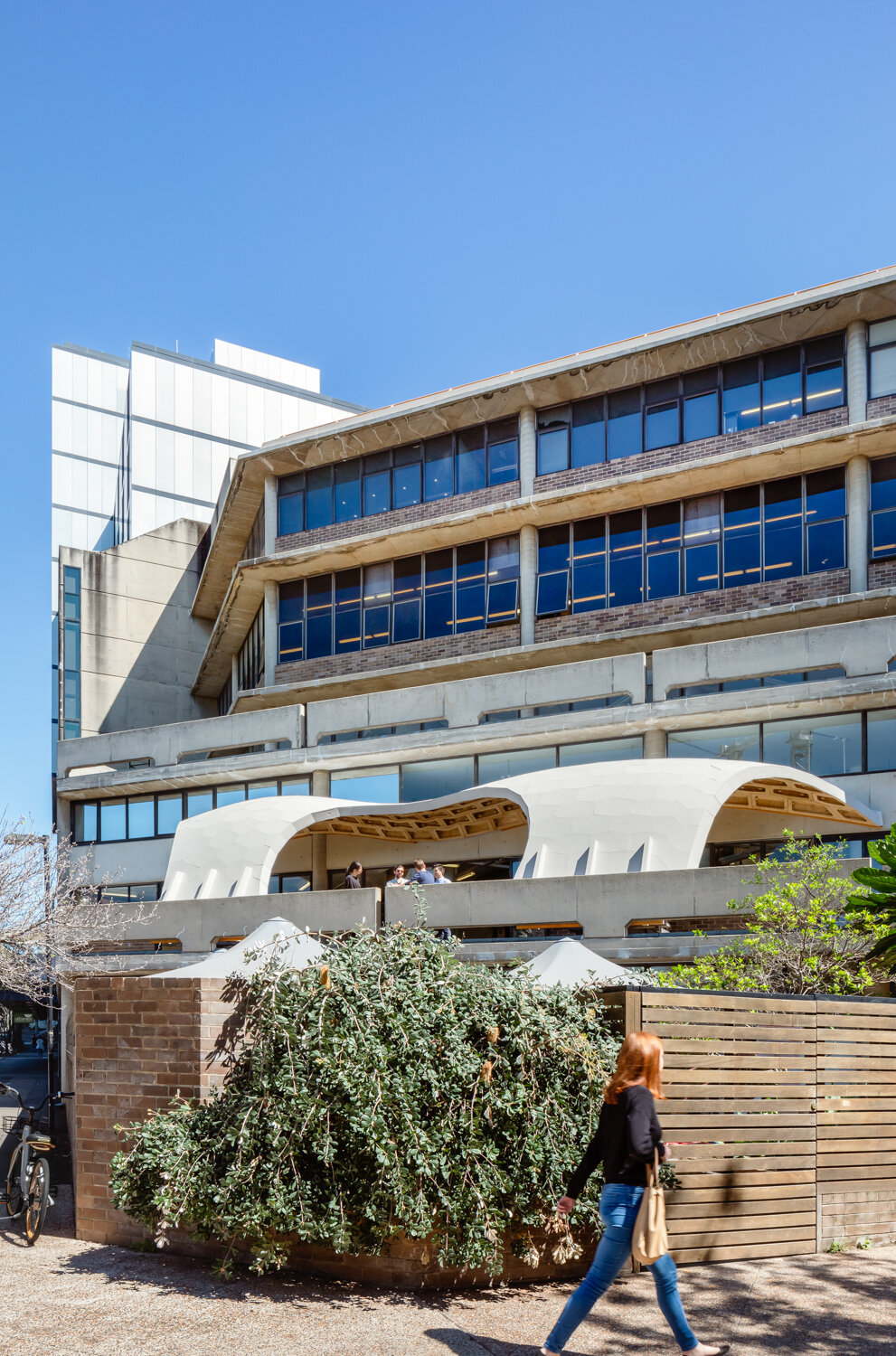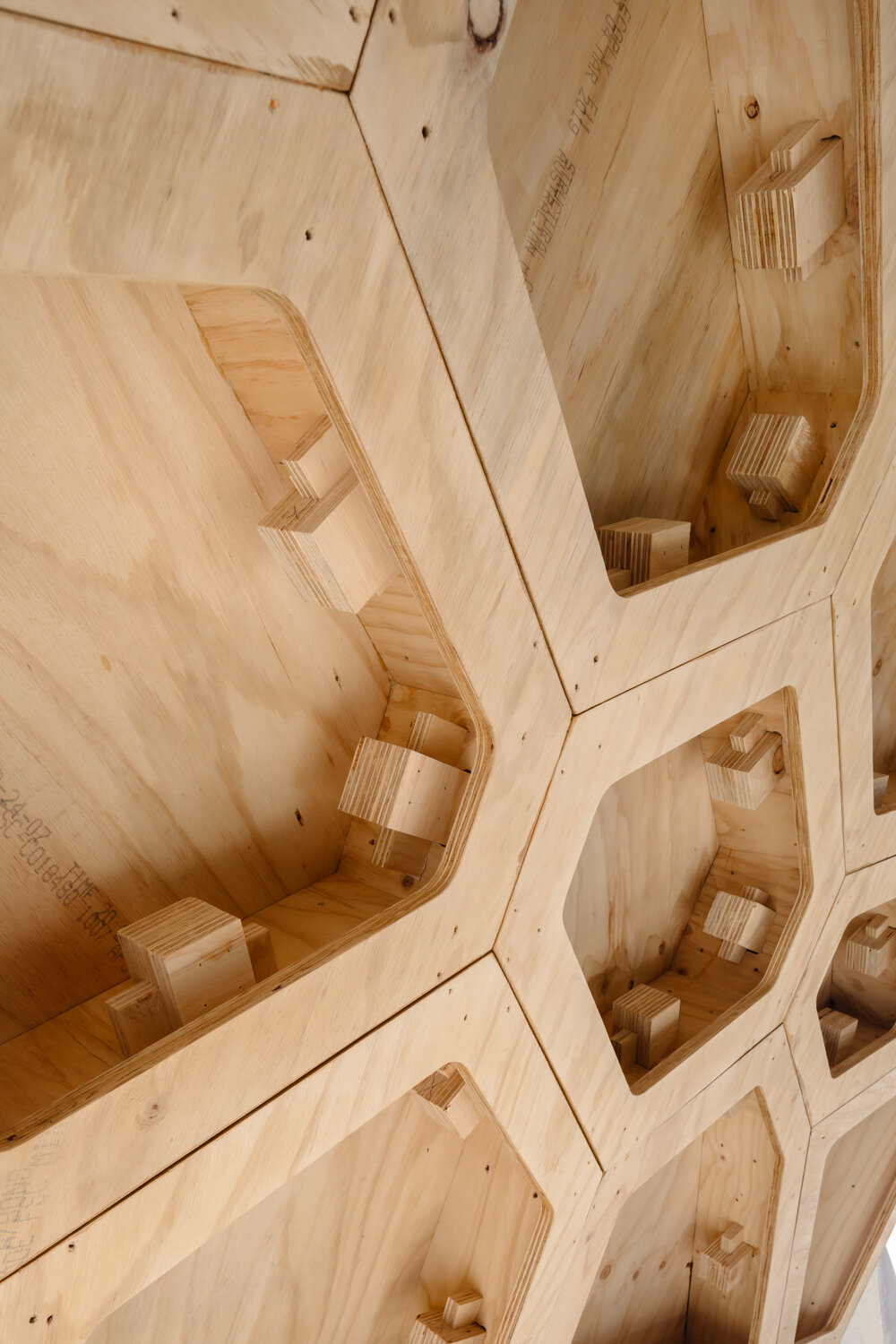hexbox canopy
Year.2019 // Area.65 SQM // Location. Sydney. Land of Eora Nation // USYD // Images. Katherine Lu
The Hexbox Canopy was undertaken as an intensive workshop collaboration between University of Sydney School of Architecture, Design and Planning and TU Kaiserslautern. The canopy is based on a funicular shell geometry which essentially achieves and equilibrium state of form through corresponding loads constrained by a given boundary. Typically, these types of structures might use a triangle to form the surface subdivision but, in this case, the design used a hexagon shape which changed its boundary depending on whether the structure was convex or concave.
The timber shell is made exclusively of plywood components without the addition of any kind of metal fasteners for the main load-bearing structure and consists of 204 boxes and 508 connectors. All the hollow polygonal segments that form the boxes are mitred and glued. Once all of the boxes are assembled it is extremely quick to construct without formwork or prior expert knowledge. For its size (64sqm) the structure is exceptionally lightweight and can easily be disassembled when required.
Each timber box consists of 8 plates - a top and bottom face and 6 sides glued together. Totaling 1531 plates, these were nested over 125 19mm plywood sheets. As each box contains a varying offset edge and all side plates containing mitred joints with individual dihedral angles the fabrication required more than the average 3 axis milling machine. Fabrication was therefore carried out on the schools Kuka KR120 6 axis robot, which has been fitted with a spindle and cutting tool. All the mitred joints were connected with the Lamello Tenso P14 system, for quick and easy assembly.
The project neatly demonstrated the power of collaboration between two universities using cutting edge parametric software and fabrication techniques with the support of industry to produce ultra-precise timber elements forming a large-scale canopy. The lightweight plywood structure further demonstrates a new ‘plug & play” systems for rapid on-site assembly and disassembly of complex timber plate shells with no mechanical fixing.
Project Team: Eduardo De Oliveira Barata, Christopher Robeller, Valentino Tagliaboschi, Felix-Schmidt Kleespies, Lynn Masuda, Rodney Watt, Dominik Diehl, Philip Becker, Benedikt Blumenröder, Florian Lapport, Sarah Lutgen, Manuel Scheib, Jan Neklapil, Anna Specchio, Albert Marhoffer, Iridia Xanthou, , Jian Howe Lee, William Stephenson, Geun Mo Kim, Liezl Pajarin, Khoa Nguyen, Haochen Sun, Minh Au, Joseph Emmi, Wenxi Shi, Ernest Sun, Alvin Hui, Guobin Dai, Nazgol Asadi, Ziyun Gao, Prudence Tang, Jingwei Li, Chaoran Ni, Satoshi Hoshino, Muneeb Ahmed, Victoria Vuong, Carla Alkhouri, Michael Calarco, Christian Tsitsos, Michael Connolly,
Industry Sponsorship: Lamello SA, PMI Engineers (Thomas Williams), Carter Holt Harvey Plywood




